Toyota RAV4 vs Honda CR-V: Which Is the Right Crossover for You?
April 23, 2023
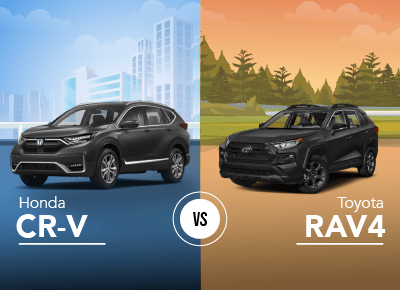

John Goreham is a life-long car nut and recovering engineer. John’s focus areas are technology, safety, and green vehicles. In the 1990s, he was part of an academic team that built a solar-electric vehicle from scratch. His was the role of the battery thermal control designer. After earning his engineering degree, John also completed a marketing program at Northeastern University. For 20 years, he applied his engineering and sales talents in the worlds of semiconductor manufacturing, biopharmaceutical production, and automotive electronics supply chain. Always a writer, John has published numerous articles in technical journals such as Chemical Processing Magazine. In 2008 he retired from that career and dedicated himself to chasing his dream of being an auto writer. In addition to online publications such as Car Talk, John’s work has appeared in print in dozens of American newspapers, and he provides reviews to many vehicle shopping sites.
The Toyota RAV4 and Honda CR-V are the vehicles that created the two-row family crossover segment. Many generations later, they have been refined and polished to provide a buyer with exceptional value, driving satisfaction, reliability, and safety.
However, they both have very different personalities. The find out what sets them apart, we tested both the Honda CR-V and Toyota RAV4 ourselves. Here is our breakdown of the Toyota RAV4 vs. the Honda CR-V. We won’t tell you which one to buy, but we also won’t hold back our opinions.
Table of Contents
Trims and Sub-models
Fans of Honda will recognize the CR-V trim levels. Honda uses the usual LX, EX, EXL, and Touring trims prior owners know and love. Each model steps up the content a notch. Honda also offers a Hybrid trim introduced in 2020.
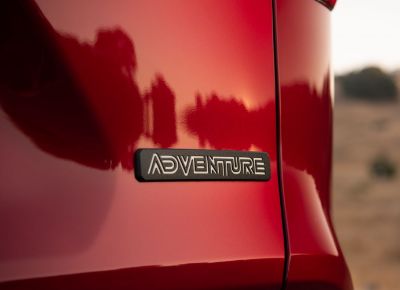 Toyota’s RAV4 line is much broader and includes far more specialty trims. One significant difference between the two is that Toyota markets the Hybrid RAV4 as part of their vehicle lineup rather than a stand-apart trim.
Toyota’s RAV4 line is much broader and includes far more specialty trims. One significant difference between the two is that Toyota markets the Hybrid RAV4 as part of their vehicle lineup rather than a stand-apart trim.
Toyota also offers a plug-in hybrid-electric halo version of the RAV4 line in two trims. The RAV4 Prime offers the highest MPGe in its class, and it also delivers the best performance of any mainstream crossover by a long shot. The RAV4 Prime is second only to the Supra among its current line in terms of quickness.
In addition to the green trims, the RAV4 line also offers an Adventure and TRD trim for superior off-road performance. These trims add a special all-wheel-drive system, a bit more ground clearance, and selectable drive modes for various off-road terrains.
Couple this emphasis on green trims with dedicated off-road trims and one can see that Toyota goes much farther with its RAV4 line than Honda. If you are looking for off-road capability, want the best energy efficiency, lowest emissions, or best performance, the RAV4 line offers buyers more options than the Honda line does.
The Tale of the Tape
The CR-V and RAV4 are very similar vehicles in terms of real-world space. For those who want a more detailed look at the numbers, we pulled together this chart summary of the vehicles' dimensions after we tested them both.
| Model | EPA Passenger Volume (Cu Ft) | EPA Cargo Volume (Cu Ft, seats up/down) | Length (Inches) | Width (Inches, without mirrors) | Horsepower |
| RAV4 | |||||
| RAV4 Hybrid | |||||
| RAV4 Prime | |||||
| CR-V | |||||
| CR-V Hybrid |
Utility and Towing
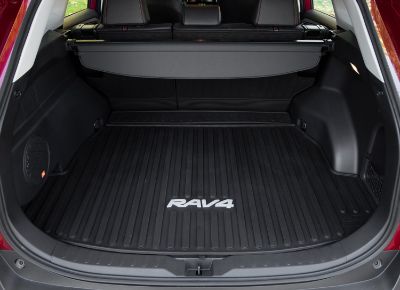 As you can see from the specifications above, the CR-V offers owners a smidge more cargo volume. Bear in mind that it is volume, not area. So, it only matters if you have packed the vehicle to the roof and the side glass. If you compare these two side-by-side in person, their cargo areas look pretty similar.
As you can see from the specifications above, the CR-V offers owners a smidge more cargo volume. Bear in mind that it is volume, not area. So, it only matters if you have packed the vehicle to the roof and the side glass. If you compare these two side-by-side in person, their cargo areas look pretty similar.
Towing ability with these two crossovers varies by trim. The RAV4 has a max towing rating of 1,750 pounds in Hybrid trims and 2,500 pounds in the RAV4 Prime trim. The RAV4 LE, XLE, XLE Premium, and Limited trims with the conventional powertrain are limited to 1,500 pounds, but the Adventure and TRD trims can tow up to 3,500 pounds.
The Honda CR-V Hybrid is not rated for towing. The conventional engine-equipped CR-V can tow up to 1,500 pounds.
One way the CR-V and RAV4 differ is in regards to spare tires. All trims of the RAV4 offer a compact spare tire standard. The Honda CR-V Hybrid does not come with a spare, but the standard trims do.
Reliability, Durability, and Quality
Both the RAV4 and CR-V are focused squarely on families and commuters. Reliability matters to all shoppers, but if this is the car that will drive you to work every day or take your family far from home on vacation, you need it in service all the time. To gauge which of these two models and brands offers better reliability, we turned to groups that tabulate owner surveys to determine which comes out on top.
For 2021, Consumer Reports gives the RAV4 3/5 stars for predicted reliability. This is similar to the model's scores from 2019 and 2020 following its update for 2019. From 2016 to 2018, the RAV4 scored a perfect 5/5 each year.
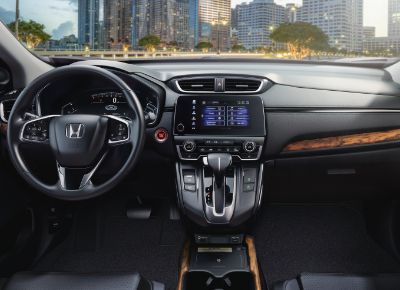 The CR-V scores higher at Consumer Reports. For 2021, the CR-V earns a 4/5 predicted reliability, and its 2019 and 2020 model years both earned a 5/5. For 2017 and 2018, the CR-V scored a 3/5 and a 4/5, respectively.
The CR-V scores higher at Consumer Reports. For 2021, the CR-V earns a 4/5 predicted reliability, and its 2019 and 2020 model years both earned a 5/5. For 2017 and 2018, the CR-V scored a 3/5 and a 4/5, respectively.
Based on Consumer Reports’ data, it appears the CR-V has an edge if you are shopping for a current model year or the two prior, but the RAV4 is better for models three to five years old.
J.D. Power & Associates ranks Toyota in the top five brands for dependability in its most recent study, and Honda scored well below the industry average.
We call this category a tie. Both the RAV4 and CR-V have a long history of reliability and durability. We would suggest taking a closer look at the specific model year you are considering since that seems to matter in this matchup more than the brand.
Safety
We will keep this section brief. For 2021, the Insurance Institue For Highway Safety (IIHS) ranks both the CR-V and RAV4 Top Safety Picks with their best headlight options. Both models scored Good on every crash test conducted. These are two very safe vehicles in a segment where safety is a shopper priority.
We will add one footnote. Prior to the 2019 model year, Toyota scored Poor on one of IIHS’s most important crash tests, and Honda Scored Good. For used shoppers, we feel the CR-V has an edge concerning safety.
Fuel Economy
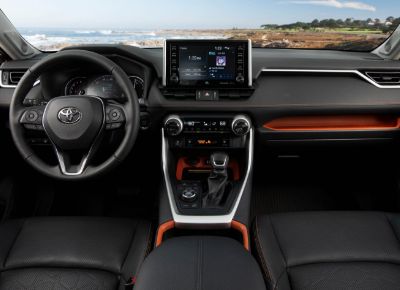 Sharp-eyed shoppers will find that the front-wheel drive versions of both the CR-V and RAV4 have the same fuel economy as a midsized sedan does. There is no sacrifice due to these vehicles' body shape or weight in terms of fuel economy.
Sharp-eyed shoppers will find that the front-wheel drive versions of both the CR-V and RAV4 have the same fuel economy as a midsized sedan does. There is no sacrifice due to these vehicles' body shape or weight in terms of fuel economy.
The popular all-wheel drive trims of both the CR-V and RAV4 earn a 29 MPG EPA-Estimated Combined fuel economy rating. The hybrid trim of the RAV4 edges out the CR-V Hybrid by 2 MPG with a 40 MPG Combined estimate.
The RAV4 Prime is a plug-in hybrid. That means you can plug it in, and it will then power itself with electricity for up to 42 miles. After which, the vehicle is a high-efficiency gasoline-electric hybrid. You can drive it without any charge and still achieve the very high MPG ratings the EPA estimates. There are no downsides to the RARV4 Prime. After federal tax incentives, its price is the same as a RAV4 Hybrid, and its performance is at a much higher level.
Infotainment
Both the RAV4 and CR-V offer Android Auto and Apple CarPlay, but you’ll need to connect via your USB cable. Some competitors are launching wireless connectivity, but it is not yet common. Both use a large, easy-to-use touch screen and all of the trims offer a volume knob. We feel that these two vehicles are closely matched with regard to infotainment.
The Drive
How a vehicle in this category drives is somewhat subjective. Even though we tested both vehicles ourselves, how we think they handled is personal. So we will offer our strong opinions here, but bear in mind you may have a different opinion. We’ll start with the conventionally-powered trims, which have the base four-cylinder non-hybrid engines.
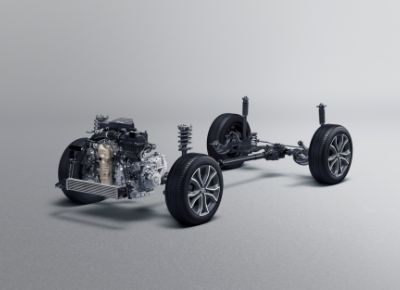 With their base powertrains, the RAV4 and CR-V differ quite a bit when it comes to power delivery. Since the CR-V is turbocharged, it feels like it pulls more strongly from a stop. That torque is a big advantage. Also, since the CR-V uses a constantly-variable transmission with its conventional engine, we like the smoothness the CVT offers. Based on our testing and our preferences, the CR-V is the clear winner. However, if you prefer a geared transmission, the RAV4 offers one with its conventional engine.
With their base powertrains, the RAV4 and CR-V differ quite a bit when it comes to power delivery. Since the CR-V is turbocharged, it feels like it pulls more strongly from a stop. That torque is a big advantage. Also, since the CR-V uses a constantly-variable transmission with its conventional engine, we like the smoothness the CVT offers. Based on our testing and our preferences, the CR-V is the clear winner. However, if you prefer a geared transmission, the RAV4 offers one with its conventional engine.
The RAV4 Hybrid and CR-V Hybrid both offer a better, more satisfying feel on the road. Both use CVTs, so the geared transmission option is off the table. We feel they are similar in driving satisfaction. However, the RAV4 Prime is a different animal. Its combined 300 HP paired with outstanding electric torque makes it fast in all situations unless you opt to employ EV ECO mode. Why would you? The vehicle gets 94 MPGe in normal mode. The RAV4 Prime is so much better in power delivery it is not really a fair fight.
All of these RAV4 and CR-V trims are enjoyable in terms of handling. If you are coming from a sedan, you will quickly adapt to the more upright, higher-visibility seating position and never look back. They also don’t feel tippy in normal driving. Ride comfort is acceptable in every trim, but shoppers will find that the base trims with their “higher-profile” tires offer a bit more comfort over potholes.
Price and Value
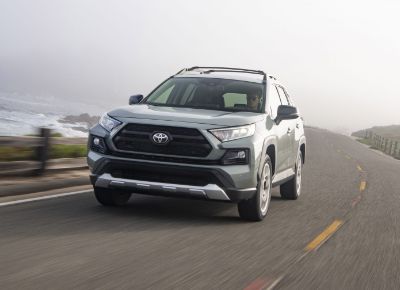 Both the RAV4 and CR-V lines are among the best bangs for the buck in the automotive world. This is a very competitive segment, and the Mazda CX-5, Subaru Forester, Ford Escape, and GM Equinox and Terrain twins keep the pencils at dealerships sharp. Resale values are similar.
Both the RAV4 and CR-V lines are among the best bangs for the buck in the automotive world. This is a very competitive segment, and the Mazda CX-5, Subaru Forester, Ford Escape, and GM Equinox and Terrain twins keep the pencils at dealerships sharp. Resale values are similar.
The RAV4 in FWD with no options starts at around $28K, including destination charges but before dealer discounts. The Honda CR-V in FWD with no options starts at around $27K, including destination charges but before possible dealer discounts.
We offer two comments about this pairing. First, Toyota discounts more. This is not our opinion. Honda told us so. Honda prides itself on a closer-to-MSRP sales price. In the end, comparably-equipped versions of each of these models will cost buyers roughly the same.
Second, the RAV4 Prime comes with a massive $7,500 federal tax incentive, and it may also qualify for significant local EV discounts and rebates. Coupled with its $500 per year fuel savings compared to a conventional RAV4 or CR-V, the RAV4 Prime’s actual ownership cost is much lower.
Current Honda CR-V Deals & Incentives
| Year | Make | Model | Cash Incentives (up to) | Best Avail. APR | Lease Offers | Expiration |
|---|---|---|---|---|---|---|
| 2024 | Honda | CR-V | ||||
| 2025 | Honda | CR-V | $329/month for 36 months, $3,599 due at signing | 9/3/24 | ||
| 2024 | Honda | CR-V Hybrid | ||||
| 2025 | Honda | CR-V Hybrid | $379/month for 36 months, $3,899 due at signing | 9/3/24 |
You may qualify for additional deals and incentives, check out this month's Honda deals here.
Current Toyota RAV4 Deals & Incentives
| Year | Make | Model | Cash Incentives (up to) | Best Avail. APR | Lease Offers | Expiration |
You may qualify for additional deals and incentives, check out this month's Toyota deals here.
Which is Better? Toyota RAV4 or Honda CR-V
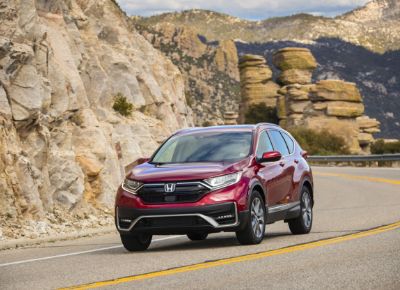 As you can see, the Toyota RAV4 and Honda CR-V product lines offer shoppers a lot of variations. The RAV4 line is much broader than the Honda CR-V line, with its offering of an expanded green trim and more off-road options.
As you can see, the Toyota RAV4 and Honda CR-V product lines offer shoppers a lot of variations. The RAV4 line is much broader than the Honda CR-V line, with its offering of an expanded green trim and more off-road options.
Both the RAV4 and CR-V offer new vehicle shoppers outstanding safety, value for the dollar, a roomy interior, a large cargo area, similar infotainment options, and a satisfying driving experience.
We have highlighted the different feelings of the various powertrain offerings. We like the RAV4 Prime’s driving experience at the top of the price range and the CR-V at the bottom. However, the CR-V comes with a CVT transmission in the affordable ranges, and the RAV4 still offers an old-school geared transmission with its non-hybrid engines.
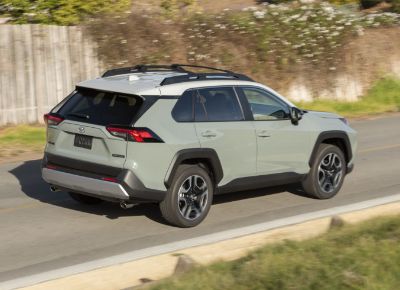 Our research revealed that the CR-V has one hidden advantage in used vehicles older than three years of age. The CR-V has a higher level of safety in those older years. The used RAV4 prior to 2019 has the edge in reliability reports from owners.
Our research revealed that the CR-V has one hidden advantage in used vehicles older than three years of age. The CR-V has a higher level of safety in those older years. The used RAV4 prior to 2019 has the edge in reliability reports from owners.
We hope this comprehensive overview has helped shoppers considering the Toyota RAV4 vs. the Honda CR-V. If there is one take-away from our research, it is that which type of trim one is considering makes a big difference in which of these two great vehicles is the “winner.”
Best Car Deals by Category
Frequently Asked Questions
Which is better the Honda CR-V or Toyota RAV4?
Both models have their own set of advantages. The Toyota RAV4 has more trim level options as well as more “green” options. Older model CR-Vs have higher reliability ratings. It’s more important to consider which trim level is right for you when picking between these two vehicles.
What trim levels are available on the Honda CR-V?
Honda offers the LX, EX, EX-L, and Touring trims for the Honda CR-V. Honda also offers a hybrid version that was introduced in 2020.
What trim levels are available on the Toyota RAV4?
Toyota offers the LE, XLE, XLE Premium, Adventure, TRD Off-Road, and Limited trim levels for the RAV4. The Adventure and TRD Off-Road offer more off-roading capabilities. Toyota also offers a hybrid and plug-in hybrid (RAV4 Prime) model.
Which one is more reliable the Honda CR-V or Toyota RAV4?
Consumer Reports gives the RAV4 a 3/5 star rating for predicted reliability. Older (2016-2018) RAV4 models get a higher 5/5 rating. The CR-V gets a 4/5 star rating and older (2017 and 2018) models have a lower 3/5 and 4/5 star rating. Both have a long history of reliability and durability.
Which one drives better the Honda CR-V or Toyota RAV4?
The CR-V uses a turbocharged engine and CVT transmission. The RAV4 doesn’t have as much torque and uses a geared transmission. Based on our testing and preference, the CR-V is a clear winner. However, both are enjoyable to handle, especially if coming from a sedan as your previous vehicle.
Which is cheaper the Honda CR-V or Toyota RAV4?
The RAV4 starts at around $28,000 and the Honda CR-V starts at around $27,000. However, Toyota offers more discounts while Honda prides itself on a closer-to-MSRP sales price.
Posted in Car Buying Tips, Car Research & Comparisons |




